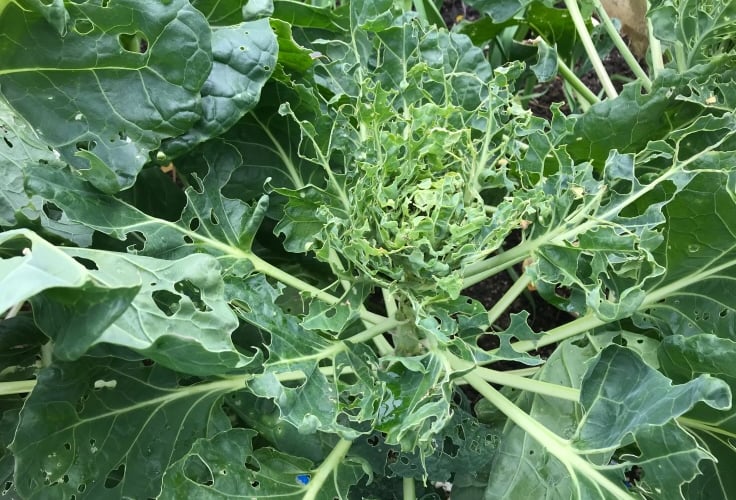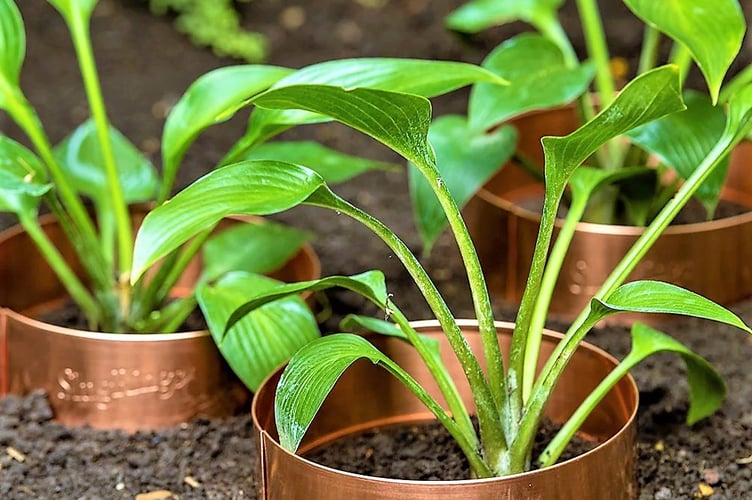SLUGS and snails caused horticultural havoc in our gardens this year. They loved the mild moist spring and cool start to the summer and couldn’t wait to eat virtually everything we planted. So is there anything we can do to prevent similar carnage in the coming seasons?
It may be hard to believe, but slugs aren’t all bad. There are 44 species in the UK and only about ten attack our plants. The rest recycle dead organic matter, enriching the soil with nutrients and improving its structure. They’re also an important food source for wildlife we welcome into the garden, including frogs, hedgehogs and song-thrushes.
The fact remains that 2024 has been the worst year for mollusc mayhem that many of us can remember. Vegetable gardens have been front-line targets with lettuces and young beans disappearing overnight, and courgettes, peppers, squash and tomato plants consigned to the compost heap.
Slugs enjoy flowers as a tasty snack, with delphiniums, dahlias and lupins particularly vulnerable this year. Even balconies and window boxes don’t escape their attentions - it’s amazing how high they can climb - and they can cover a surprising amount of ground in a night…a species known as the tramp slug can set a cracking pace of 17 metres an hour.
Once they’ve found something they like, they tend to stay around and hide in the soil during the day ready for a feast when darkness falls.
Sadly, one of gardening’s incontrovertible truths is that you can’t get rid of slugs and snails even if you choose to poison them with chemicals. What you can do is make them unwelcome in your garden, protect vulnerable plants and grow varieties they don’t enjoy eating.
There are more unpalatable plants than you might think and some are stars of bed and border. For instance, ferns, edryngiums, verbena and helebores have tough thick leaves which are hard to chew.

Other flowering plants not to a slug’s taste are euphorbias, rosemary, lavender, foxgloves, hardy geraniums, hydrangeas and astilbes.
In the vegetable garden, raking over bare soil will expose snail and slug eggs for the birds to pick off. Delay planting out until seedlings are relatively mature and feed plants in moderation to avoid too much leafy growth. Remember healthy plants are more resistant to slugs and snails.
One theory is that slugs and snails are not keen on onions and garlic and certainly my crops of both escaped their attention this year.
If you create habitats for slugs and snails in log-piles, mulch and natural debris you will be providing shelter and a food source which, it’s claimed, will make the molluscs less likely to venture onto your vegetable bed.
All the traditional slug deterrents have their supporters and detractors and it’s really a question of giving them a go until you find something which seems to work for you. Popular strategies include protecting plants with barriers of eggshells, grit, gravel, wool pellets, coffee grounds, copper rings (or rows) and garlic drenches. A slight problem with the copper alternatives is that they are quite expensive, particularly if buying in bulk.
The most popular non-chemical deterrent is trapping molluscs in half-buried jars of beer but does it work? Many gardeners swear by it, but recent research with time-lapse cameras showed that most slugs visiting the traps simply had one for the road and moved on with probably nothing worse than a hangover in the morning.
The obvious answer is to try out the various methods and see which works best for you.
A garden pond, even a small one, will attract amphibians like frogs and toads that feed on slugs and snails - apparently a frog can eat its own weight in slugs every night.
Salt has been proved to kill slugs and snails but it changes soil and compost chemistry and then becomes poisonous to plants. Nematodes - microscopic worms - watered around plants fatally attack slugs but the drawback is that they also kill the harmless ones which are important for the ecosystem.
Keep things neat and tidy - stacks of plant pots and general garden debris make idea dark damp homes for unwelcome visitors.
If all this fails, it’s probably back to the old fashioned method of hunting them out and picking them off with a pair of tongs (if you’re squeamish). Being an old softy these days, I take slugs and snails to a field down the road for release back to nature, trying to forget that they’ll most likely soon be somebody’s dinner.

JUST THE JOB
What to do in West Somerset Gardens in November
SOWING
In our area it should be possible to sow broad beans outdoors in the coming month using the variety Aquadulce, which will give an early crop. If sown now they should emerge after four weeks.
PLANTING
While the soil is workable it’s the best time to plant bare-rooted roses incorporating a mixture of compost and good soil.
PRUNING
You can begin apple tree pruning as soon as all the leaves have fallen even though some varieties are still holding fruit. Cut back all unwanted laterals to a couple of buds and shorten leaders by at least a third.
This applies to trained trees - mature standards can be left alone except for the removal of dead, diseased or damaged branches.
Tall roses can be given some attention now although main pruning should be left until March. This month, just trim the top shoots to reduce damage from wind-rock during the winter.
Raspberries should have this year’s fruited canes removed at near ground level. Also eliminate weak and spindly shoots and if necessary reduce this year’s strong growth to about five shoots per plant.
PESTS
Weeds never seem to stop growing in West Somerset gardens so keep up the action against fast-seeding varieties like groundsel, chickweed and ground ivy, which often flower throughout the winter.
COMPOSTING
Collect leaves from deciduous trees and start a leaf mould heap. Simply stack them in any compost container and leave them for a couple of years to produce some valuable leaf mould.



-Credit-Steve-Speck[99].jpg?width=209&height=140&crop=209:145,smart&quality=75)
